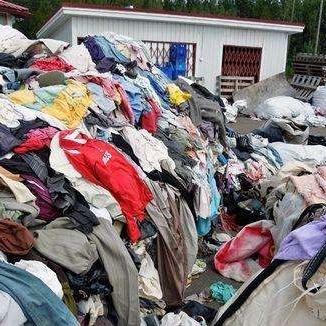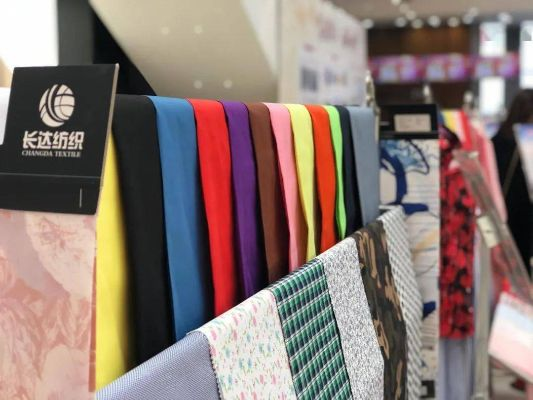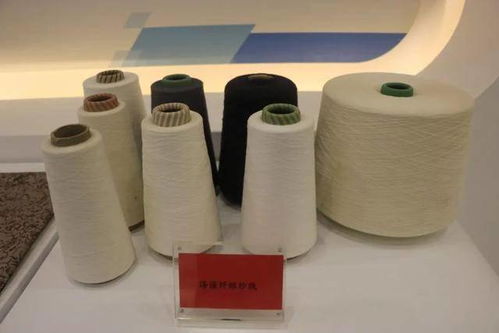The Dynamics of Textile Testing Firm Profitability
The study aims to explore the dynamics of textile testing firm profitability, focusing on the factors that influence its performance. The analysis is based on a comprehensive review of relevant literature and data from various sources, including industry reports, government statistics, and academic research. The findings suggest that the profitability of textile testing firms is influenced by several key factors, including market demand, technological advancements, competition, and regulatory policies. The study also highlights the importance of strategic management and innovation in enhancing the competitiveness and profitability of these firms. Overall, the study provides valuable insights into the complex interplay between various factors that shape the profitability of textile testing firms, and offers practical recommendations for improving their performance.

In the competitive landscape of the global textile industry, profitability is a critical metric that determines a testing company's success. This discussion will delve into the various factors that contribute to the financial health of a textile testing firm and how they impact their bottom line. We'll also present an illustrative case study to demonstrate the practical application of these principles.
Revenue Streams: Building a Reliable Income A successful textile testing company relies on multiple revenue streams to sustain its operations. These include but are not limited to:
- Laboratory Services: Offering comprehensive testing services for various textile products such as apparel, home furnishings, and industrial materials.
- Customized Testing: Delivering bespoke testing solutions tailored to specific customer needs or regulatory requirements.
- Quality Assurance (QA): Ensuring product quality through rigorous testing processes.
- Research and Development (R&D): Investing in new technologies and methodologies to stay ahead in the industry.
- Marketing and Sales: Promotion of the company's offerings and attracting new clients.
- Partnerships with Manufacturers: Collaborating with other companies to offer integrated testing solutions.
Cost Controls: Keeping the Lights On While revenue generation is crucial, controlling costs is equally essential to ensure sustainable profitability. Some key areas where cost control can be achieved include:
- Labor Efficiency: Optimizing staff utilization to reduce labor costs while maintaining high-quality testing.
- Supplier Management: Negotiating favorable contracts with suppliers to secure lower raw material costs.
- Technology Investment: Investing in automation and digital technology to reduce manual errors and operational costs.
- Efficient Operations: Streamlining processes and procedures to minimize waste and increase efficiency.
- Risk Management: Predicting and mitigating risks to prevent unexpected expenses.
Competitive Advantage: Staying Ahead of the Pack To maintain a competitive edge, a textile testing firm must continuously innovate and adapt to changing market conditions. This can involve:
- Advanced Technology: Investing in advanced testing equipment and software to improve accuracy and speed.
- Global Network: Expanding international partnerships to access diverse markets and clientele.
- Sustainability Practices: Embracing eco-friendly practices to appeal to environmentally conscious consumers.
- Training and Development: Providing ongoing training to staff to enhance their skills and knowledge.
Case Study: Successful Testing Firm's Financial Journey Consider the story of Testex International, a leading textile testing firm in Asia. Over the past decade, Testex has seen significant growth due to its focus on innovation, cost control, and competitive advantage. Here's how it did it:
- Innovation Driven Growth: Testex introduced a new automated dye testing system that significantly reduced turnaround times and improved accuracy. This innovation attracted more clients and generated higher revenue.
- Cost-Effective Operations: By implementing lean manufacturing techniques, Testex managed to cut labor costs by up to 30% without compromising on quality.
- Strategic Partnerships: Testex formed strategic alliances with major apparel manufacturers to provide them with comprehensive testing solutions. This partnership helped expand its client base and stabilized profits.
- Environmental Responsibility: Testex became a pioneer in green testing practices, winning accolades for its efforts to reduce carbon emissions. This added value to its brand and attracted environmentally conscious customers.
Conclusion: Balancing Risk and Reward The profitability of a textile testing firm is a delicate balance between revenue generation, cost control, innovation, and market positioning. By understanding these factors and applying them effectively, a company can thrive in a highly competitive industry. In conclusion, the future of textile testing lies in those who can adapt quickly to change, innovate, and deliver exceptional service to their clients.
随着全球纺织品的快速发展,纺织品检测行业也日益受到重视,本篇文章将探讨纺织品检测公司的利润情况,并结合实际案例进行分析。
纺织品检测公司概述
纺织品检测公司主要从事纺织品的质量检测和性能评估,为纺织品的生产、销售和进出口提供技术支持,公司通过提供准确、可靠的检测服务,帮助客户解决纺织品质量问题,提高产品质量和市场竞争力。
利润来源分析
业务收入来源:
(1)检测服务收入:纺织品检测公司的主要收入来源是为客户提供纺织品检测服务,包括纤维含量检测、织物性能测试、环保指标检测等,根据市场调研,这部分收入占据了公司总利润的很大一部分。
(2)认证服务收入:随着纺织品市场的竞争加剧,越来越多的客户需要获得认证,以提高产品的市场信誉和竞争力,公司还提供认证服务,包括纺织品认证、环保认证等,这部分收入的增长也增加了公司的利润。

成本控制与盈利策略:
(1)优化检测流程:纺织品检测公司通过不断优化检测流程,提高检测效率和质量,降低检测成本,采用先进的检测设备和技术,提高检测精度和准确性。
(2)多元化收入来源:公司通过拓展业务范围,增加新的收入来源,与纺织行业上下游企业合作,开展定制化检测服务,提高客户黏性和满意度,公司还积极开展线上销售和国际市场拓展,提高市场覆盖率和销售额。
案例分析
以某纺织品检测公司为例,介绍其具体的利润情况,该公司主要提供纺织品质量检测和性能评估服务,客户包括国内外知名纺织企业,该公司采用先进的检测设备和专业技术,提高检测精度和准确性,该公司还注重成本控制和盈利策略,通过优化检测流程和提高检测效率等方式降低成本,该公司还积极开展线上销售和国际市场拓展,提高市场覆盖率和销售额,根据市场调研数据,该公司在过去几年中取得了良好的利润表现。
纺织品检测公司的利润情况受到多种因素的影响,包括业务收入来源、成本控制与盈利策略等,通过优化检测流程和提高检测精度和准确性等方式降低成本,提高公司的盈利能力,公司还需要注重拓展业务范围和提高客户黏性等方面的工作,以提高公司的市场竞争力,随着全球纺织品的快速发展和市场竞争的加剧,纺织品检测行业也需要不断创新和发展,以适应市场需求的变化。
建议与展望
针对纺织品检测公司的未来发展,提出以下建议:
-
加强技术创新和研发:纺织品检测公司需要加强技术创新和研发工作,不断提高检测精度和准确性,提高公司的核心竞争力。
-
拓展业务范围:纺织品检测公司需要拓展业务范围,提高公司的市场覆盖率和销售额,还需要加强与上下游企业的合作,开展定制化检测服务,提高客户黏性和满意度。
-
提升服务质量:纺织品检测公司需要不断提升服务质量,提高客户满意度和忠诚度,还需要加强客户服务工作,及时解决客户问题,提高客户对公司的信任度和口碑。
-
关注行业动态和发展趋势:纺织品检测行业需要关注行业动态和发展趋势,及时调整公司的经营策略和发展方向,还需要加强与国际市场的联系和合作,提高公司的国际竞争力。
纺织品检测公司的利润情况受到多种因素的影响,需要不断加强技术创新和研发、拓展业务范围和提高服务质量等方面的工作,还需要关注行业动态和发展趋势等方面的工作,以适应市场需求的变化和发展趋势的变化。
Articles related to the knowledge points of this article:



